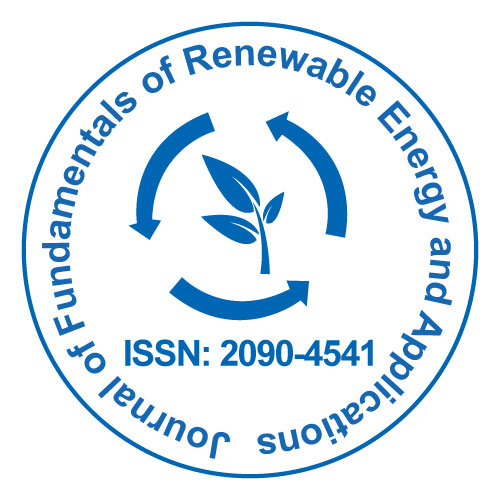
Journal of Fundamentals of Renewable Energy and Applications
Open Access
ISSN: 2090-4541
+44 1300 500008

ISSN: 2090-4541
+44 1300 500008
Ibai Funcia, Fernando Bimbela, Javier Gil and Luis M Gandia
National Renewable Energy Centre, Spain
University of Navarra, Pamplona, Spain
Posters & Accepted Abstracts: J Fundam Renewable Energy Appl
Thermochemical modeling seems a promising tool in the biomass combustion field to avoid ash-related problems during combustion: slagging, fouling and corrosion. Several authors have used thermochemical software packages to understand and validate their experimental results in different biomass combustion studies, focusing directly on ash composition or ash streams composition. Besides, most of these studies are focused on operational issues, especially on those concerning defluidization phenomena, in pilot scale combustion plants. In this work, a thermochemical model was developed to predict inorganic elements├ó┬?┬? released during combustion and the melting behavior and composition of the fly ash in the downstream, allowing to evaluate the effect of biofuel composition on the ash composition and behavior. With the aid of experimental data obtained by common techniques, previously used in other studies, such as chemical fractionation and chemical analysis to understand elements distribution during combustion, the model could be validated by comparison with real data. The results obtained with the model presented in this work, reveal the importance of the S/Cl molar ratio to reduce ash deposition problems during gas cooling in the combustion of wheat straw using large scale vibrating grate technologies. Recent Publications: 1. Li Q H et al. (2013) Study on ash fusion temperature using original and simulated biomass ashes. Fuel Process Technol. 107:107-12. Doi:10.1016/j.fuproc.2012.08.012. 2. Lehmusto J et al. (2012) High temperature corrosion of superheater steels by KCl and K2CO3 under dry and wet conditions. Fuel Process Technol. 104:253-264. Doi:10.1016/j.fuproc.2012.05.020. 3. Sengel├?┬Şv LW et al. (2013) Sulfation of condensed potassium chloride by SO2. Energy and Fuels. 27(6):3283-3289. Doi:10.1021/ef400405z. 4. Wang X et al. (2012) Mechanism research on the development of ash deposits on the heating surface of biomass furnaces. Ind. Eng. Chem. Res. 51(39):12984├ó┬?┬?12992. Doi:10.1021/ie302009m. 5. Sommersacher P et al. (2013) Application of novel and advanced fuel characterization tools for the combustion related characterization of different wood/kaolin and straw/kaolin mixtures. Energy and Fuels. 27(9):5192-5206. Doi:10.1021/ ef400400n.
Ibai Funcia has a Master’s Degree in Chemistry from the University of Navarra (UPNa), Spain; pursued a course in Pedagogical Aptitude from the same university and a Project Management Interuniversity Master's Degree by the University of La Rioja (Spain). He is currently developing his PhD thesis at the UPNa on Science and Industrial Technologies PhD Program. Since 2004 he has been working in Biomass Department, National Renewable Energy Centre, Spain as a Biomass Researcher in the following main lines: 1. Thermo-chemical route: biomass torrefaction, biomass combustion (ash behavior at high temperature) and biomass gasification (tar cleaning, sampling and analysis). 2. Biochemical route: biomass pretreatment, enzymatic hydrolysis and fermentation. 3. Biomass and Bio-fuel characterization. 4. Chromatography methods development. 5. Laboratory quality and assurance procedures implementation.
E-mail: ifuncia@cener.com